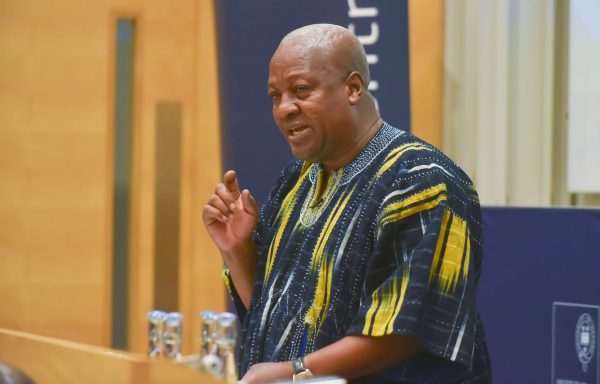Mahama exposed over $52m Wa Regional Hospital
- Posted on
- Comment
 The President, Nana Addo Dankwa Akufo-Addo, yesterday commissioned the long-awaited Wa Regional Hospital in the Upper West Region.
The President, Nana Addo Dankwa Akufo-Addo, yesterday commissioned the long-awaited Wa Regional Hospital in the Upper West Region.
The $52 million 160-bed Regional Hospital was commissioned amid fanfare; the construction spanned over 10 years.
But ahead of the official commissioning, former President John Mahama had floated a banner claiming credit for the project.
In the banner that circulated on social media last Thursday, the NDC claimed that the hospital was the legacy of John Mahama.
However, facts available do not support the attempt by the former president to appropriate the credit for the construction of the multi-million dollar hospital.
Rather, the hospital was the initiative of the erstwhile Kufuor administration under the “Ghana Hospital Project”, with the contract awarded by the government in 2008 to an Egyptian firm, Euroget De-Invest s.a.
The Ghana hospital project involves the design, construction and equipping of 500-bed Military Hospital in Kumasi, two regional hospitals in Wa and Kumasi, and six district hospitals across the country at a total cost of $339 million.
The project was designed to be a turnkey, with the contractors sourcing for funding.
The district hospitals are the 100-bed Madina District Hospital; the 60-bed Tepa District Hospital; the 60-bed Twifo Praso District Hospital; the 60-bed Konongo District Hospital Project; the 60-bed Salaga District Hospital; the 60-bed Nsawkaw District Hospital; and the 250-bed Kumasi Sewua Regional Hospital.
The Kufuor government signed the memorandum of understanding (MoU) with Euroget s.a. for the construction of the hospitals in April 2008, gave Cabinet approval for the commencement of the project on October 29, 2008, with parliamentary approval received on November 12, 2008.
Even though the Egyptian contractors promised expeditious action, it has taken them over 10 years to deliver the first hospital blaming the Arab Spring crisis on sourcing funds.
While working on the project, the Egyptian owner of Euroget formed another company – a gold refinery company at the Kotoka Airport enclave – with a brother of former President Mahama believed to be a director.
The site for the Upper West Regional Hospital was the first to commence construction in August 2010, with the NDC boasting that it was part of John Mahama’s achievement as captured in the party’s green book ahead of the 2016 elections.
According to the contractors, the Madina Hospital at Kwabenya would be completed by December, while Tepa Hospital would be completed and handed over in April 2020, with Nsawkaw Hospital to be ready by June 2020.
The contractors claim the Konongo and Kumasi Sewua hospitals will be completed by November 2020, with the Salaga and Twifo Praso also targeting 2020.
The Wa Regional hospital is equipped with modern medical equipment, such as X-Ray Machines (stationed & mobile); CT Scan; Mammography; Ultrasound; Operation Theatre fully equipped; Medical Gases; and Patient Monitors
The facility is also fitted with a complete Local Area Network integrated with a Data Centre; Hospital Information Management Systems (HIMS); Computerized Maintenance Management System (CMMS); and Internet Connectivity.
President Akufo-Addo, who was on a two-day visit to the region, described the commissioning of the hospital as a good comment about Ghana.
“This project has passed through the hands of four successive presidents of Ghana. It was initiated and began under the 2nd President of the 4th Republic, His Excellency John Agyekum Kufuor; it was continued by his successor, His Excellency the late John Evans Atta-Mills; and his successor, His Excellency John Dramani Mahama; and it has been commissioned by me, the 5th President of the 4th Republic. This is a good statement about our country, of our institutions, and of our governance,” the President said.
It is this continuity that makes Ghana an attractive destination for foreign investment and foreign interest in Ghana, because agreements struck by one government are respected by successive governments, he added.
He urged the managers of the facility to employ the best practices in making sure that the facilities are maintained.
By Fortune Alimi






 (Selorm) |
(Selorm) |  (Nana Kwesi)
(Nana Kwesi)